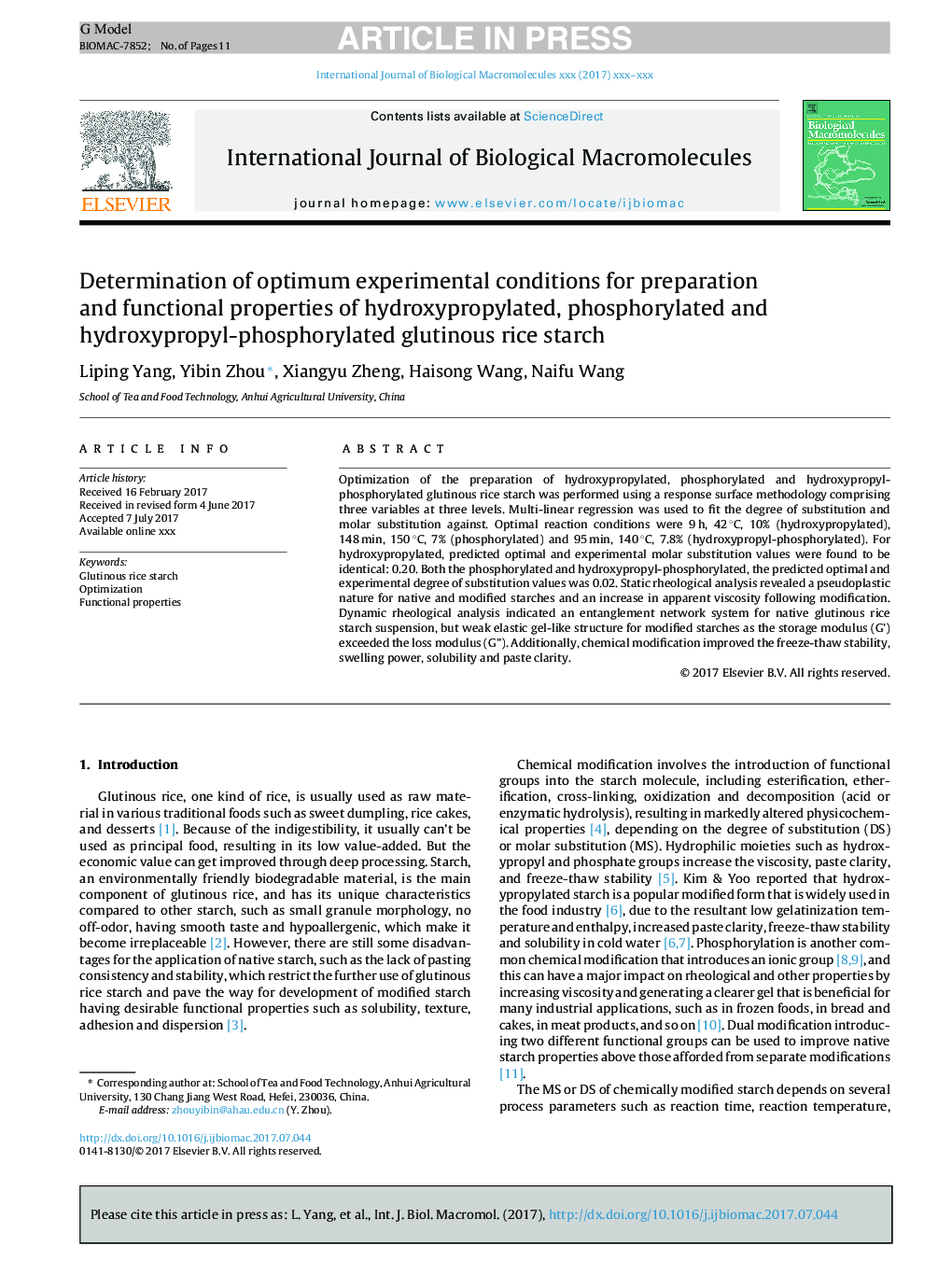| Article ID | Journal | Published Year | Pages | File Type |
|---|---|---|---|---|
| 8329413 | International Journal of Biological Macromolecules | 2017 | 11 Pages |
Abstract
Optimization of the preparation of hydroxypropylated, phosphorylated and hydroxypropyl-phosphorylated glutinous rice starch was performed using a response surface methodology comprising three variables at three levels. Multi-linear regression was used to fit the degree of substitution and molar substitution against. Optimal reaction conditions were 9 h, 42 °C, 10% (hydroxypropylated), 148 min, 150 °C, 7% (phosphorylated) and 95 min, 140 °C, 7.8% (hydroxypropyl-phosphorylated). For hydroxypropylated, predicted optimal and experimental molar substitution values were found to be identical: 0.20. Both the phosphorylated and hydroxypropyl-phosphorylated, the predicted optimal and experimental degree of substitution values was 0.02. Static rheological analysis revealed a pseudoplastic nature for native and modified starches and an increase in apparent viscosity following modification. Dynamic rheological analysis indicated an entanglement network system for native glutinous rice starch suspension, but weak elastic gel-like structure for modified starches as the storage modulus (G') exceeded the loss modulus (G”). Additionally, chemical modification improved the freeze-thaw stability, swelling power, solubility and paste clarity.
Related Topics
Life Sciences
Biochemistry, Genetics and Molecular Biology
Biochemistry
Authors
Liping Yang, Yibin Zhou, Xiangyu Zheng, Haisong Wang, Naifu Wang,
